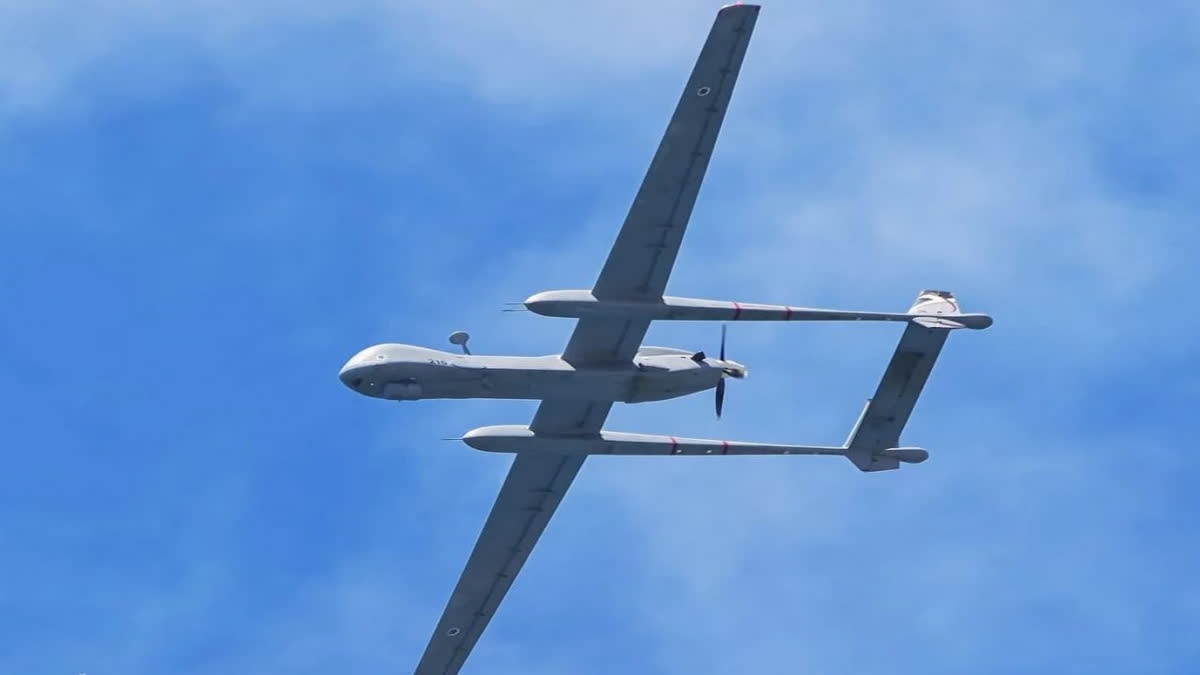Forward air base (Northern sector): In a mega capability boost, the Indian Air Force has inducted its latest Heron Mark 2 drones, which have strike capability and can carry out surveillance along the borders with both China and Pakistan in a single sortie itself.
The four new Heron Mark-2 drones, which can be equipped with long-range missiles and other weapons systems, have been deployed at a forward air base in the northern sector, where Team ANI witnessed their operations. The drones with satellite communication capability have given a long desired capability to the Indian Air Force, as its drones can operate at very long distances for close to 36 hours at a stretch and can also laser illuminate enemy targets from very long ranges to help fighter aircraft destroy them using their long-range weapons. “The Heron Mark 2 is a very capable drone. This is capable of longer endurance and has ‘beyond the line of sight’ capability. With this, the entire country can be surveilled from the same place,” the commanding officer of the drone squadron, Wing Commander Pankaj Rana, told ANI in an exclusive interaction at the base. He said the longer endurance also ensures that multiple missions can be flown and multiple sectors can be addressed in one mission itself. “The drone simply amalgamates into the Intelligence, surveillance, and reconnaissance matrix of the Indian Air Force,” Rana said.
Highlighting the major strength of the drone, Rana said it can provide 24x7 surveillance of targets. Modern avionics and engines have ensured that the operational ceilings of the aircraft have been increased. He said the drone can operate in any weather and on any terrain to address its targets and complete the mission. “Flying from here, the drone can cover both the adversaries in the same sortie itself,” Rana said while highlighting the major strengths of the latest unmanned machine of the force.
Defence officials said the drones are capable of being equipped with weapons, and work towards weaponising them is in progress. The drones can be equipped with different types of weapons, as the original equipment manufacturers can equip it with air-to-ground missiles, air-to-ground anti-tank weapons, and bombs. Squadron Leader Arpit Tandon, who is a pilot of the Heron Mark 2 drone, said the new version of the Heron drone has multiple advantages over the previous versions, which started getting inducted into the IAF in the early 2000s.
“The payloads and the onboard avionics of the Heron Mark 2 can operate at sub-zero temperatures and in any weather condition. This is helping the Indian Air Force achieve footprints over any type of terrain,” he said.
The Indian Air Force is also working on Project Cheetah, under which around 70 of the Indian Armed Forces’ Heron drones are to be upgraded with satellite communication links and weaponised to meet the requirements of the armed forces. The Indian armed forces are also getting 31 Predator drones, which are in the high altitude, long endurance category and are helping the Navy presently to cover large tracts of the Indian Ocean region. India is getting a version of the drones that can be equipped with weapons and will have sensors for different roles in different terrains. Fifteen of these drones are to be operated by the Indian Navy, while the other two forces would be getting eight each. (ANI)



